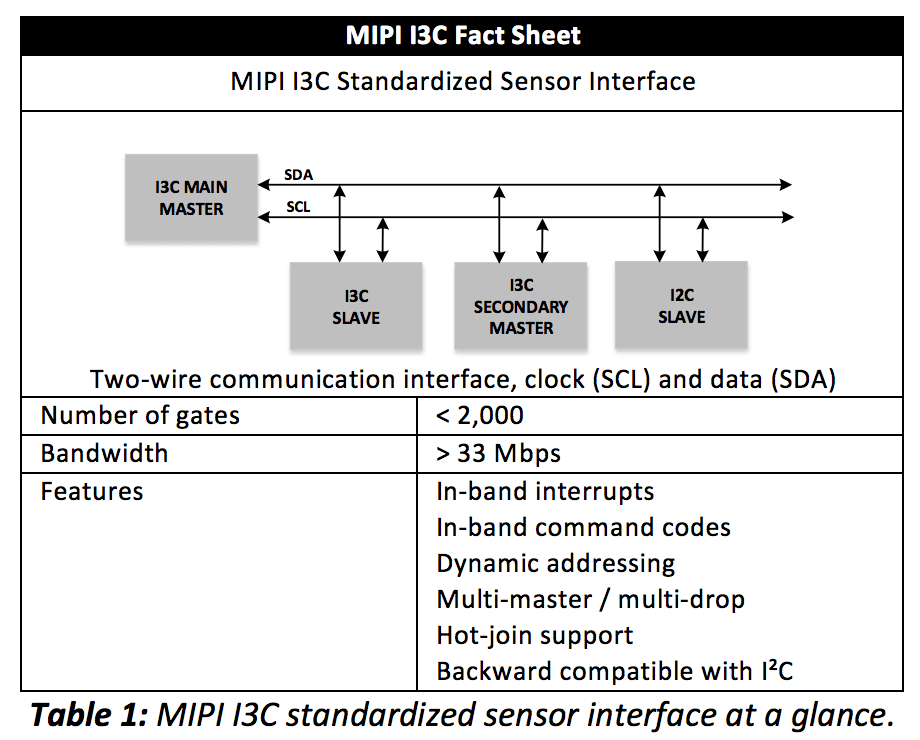Integrating sensors into small devices has never been easy, but today it’s even more complex—and more important—than ever before. Thanks to the smartphone industry that popularized sensor applications, consumers and businesses benefit daily from the information sensors provide. Sensors in all types of mobile-connected devices are enabling markets in many vertical industries and fueling the burgeoning Internet of Things (IoT). Camera sensors are essential to autonomous vehicles, for example, and embedded biometric sensors are innovating new medical, health, and fitness products.
Because there are broad and diverse markets for sensor-based products, engineers need integration techniques that fulfill many use cases. To facilitate both design and operational efficiencies, engineers need interfaces that are easily implemented and can accommodate multiple sensors in a device with minimal design complexity.
Minimizing pin count is fundamental to an efficient solution because it allows more sensors in a device, simplifies designs and reduces component and implementation costs. But minimizing pin count requires reducing the number of interfaces between components. Designers have traditionally used I2C, SPI, UART, or GPIOs, depending on the sensors used, and the fragmentation of interfaces can increase pin counts when multiple sensors are required.
Interfaces used for sensors need not be complex, because the devices are typically based on mechanical and analog technologies. Yet the interfaces must operate with very little power and use power efficiently to support continuous data collection and transmission from multiple types of sensors—all without compromising battery life.
A unifying solution that solves these integration challenges and provides system-level benefits has recently been released by MIPI Alliance as a draft specification to its member companies. MIPI I3C was developed collaboratively with the broader sensor industry and consolidates the I2C, SPI, UART, and GPIO approaches into a single specification. MIPI I3C is comprehensive and compatible with each approach. The specification requires just two pins and consumes a fraction of the energy the legacy interfaces require. The unified approach can interface multiple sensors from different vendors to a controller or application processor to reduce costs and complexity.

MIPI I3C is also important because it represents what standards are all about: bringing an industry together to craft engineering solutions that reduce fragmentation, facilitate interoperability, and create design and production efficiencies to accelerate time to market while reducing costs. MIPI Alliance has specialized in this work since 2003, developing methods to interconnect a full range of components in the demanding mobile operating environment.
Given the industry need and the participation of the sensor community in this effort, we fully expect the new interface will play a fundamental role in the growth of sensor-based markets, including the IoT.
MIPI Alliance is a member program of the IEEE Industry Standards and Technology Organization (ISTO), an international federation of leading industry groups and consortia dedicated to the advancement of standardized technologies for the benefit of industry. Day-to-day operations support for ISTO and ISTO member programs is provided by IEEE Alliance Management Services.

